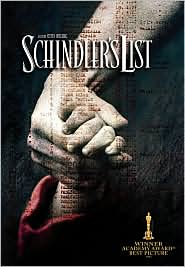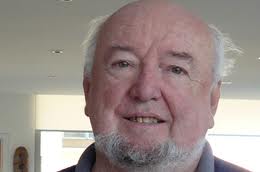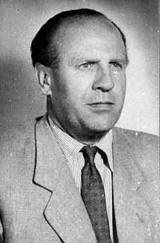Note: Thomas Keneally was WINNER of the Booker Prize for Schindler’s List (1982). He is a two-time WINNER of Australia’s highest award, the Miles Franklin Award in 1967 and 1968, and has been WINNER of the Peggy V. Helmerich Distinguished Author Award in 2007.
“He who saves a single life saves the whole world.”
Thomas K eneally’s Booker Prize-winning, fictionalized biography of Oskar Schindler memorializes a member of the Nazi party who endangered his own life for four years, working privately to save Jews from the death camps. A playboy who loved fine wines and foods, he was also a smooth-talking manipulator (and briber) of Nazi officials, as well as a clever entrepreneur, already on his way to stunning financial success by the early days of World War II. Nowhere in Schindler’s background are there any hints that he would one day become the savior of eleven hundred Jewish men and women.
eneally’s Booker Prize-winning, fictionalized biography of Oskar Schindler memorializes a member of the Nazi party who endangered his own life for four years, working privately to save Jews from the death camps. A playboy who loved fine wines and foods, he was also a smooth-talking manipulator (and briber) of Nazi officials, as well as a clever entrepreneur, already on his way to stunning financial success by the early days of World War II. Nowhere in Schindler’s background are there any hints that he would one day become the savior of eleven hundred Jewish men and women.
While the excellent film of this novel concentrates on the dangers Schindler and “his Jews” faced daily throughout the war, Keneally, well known for his depictions of characters acting under stress, concentrates on the character of Oskar Schindler himself, beginning with his childhood and teen years. As he explores Schindler’s transformation from war profiteer and “passive” Nazi to a man willing to use his fortune to ensure the salvation of his factory workers, Keneally reveals a man of enormous courage and derring-do, a man who thrives by living on the edge.
 Presenting episodes from the lives of some of the “Schindlerjuden,” Keneally highlights their humanity, creating moments of high drama. Characters such as Leopold Pfefferberg and factory manager Itzhak Stern move in and out of the narrative, illustrating graphically the extent to which their lives depend upon Oskar Schindler, while the constant intrusion of sadistic SS commandant Amon Goeth in Schindler’s life shows the fragility of their security. Other stories, of people who just missed being saved by Schindler, highlight the arbitrariness of fate–chance–in their (and our) lives.
Presenting episodes from the lives of some of the “Schindlerjuden,” Keneally highlights their humanity, creating moments of high drama. Characters such as Leopold Pfefferberg and factory manager Itzhak Stern move in and out of the narrative, illustrating graphically the extent to which their lives depend upon Oskar Schindler, while the constant intrusion of sadistic SS commandant Amon Goeth in Schindler’s life shows the fragility of their security. Other stories, of people who just missed being saved by Schindler, highlight the arbitrariness of fate–chance–in their (and our) lives.
Throughout the nove l, Keneally stresses the importance of bearing witness and testifying to the atrocities. In one of the novel’s most moving passages, Schindler and his lover ride horses to a ridge where they can view the expulsion of the Jews from the Krakow ghetto, watching, horrified, as old or crippled laggards are murdered in front of Jewish children. “They permitted witnesses because they believed the witnesses, all, would perish, too.” Later, Schindler works with a Zionist rescue organization, secretly going to Budapest to testify about the hidden death camps.
l, Keneally stresses the importance of bearing witness and testifying to the atrocities. In one of the novel’s most moving passages, Schindler and his lover ride horses to a ridge where they can view the expulsion of the Jews from the Krakow ghetto, watching, horrified, as old or crippled laggards are murdered in front of Jewish children. “They permitted witnesses because they believed the witnesses, all, would perish, too.” Later, Schindler works with a Zionist rescue organization, secretly going to Budapest to testify about the hidden death camps.
Schindler’s heroism, his goodness within a country committed to the extermination of other humans, his recognition that witnesses are essential, and his ability to use the system in order to hasten its end bring this story of one man’s fight against the Holocaust to life. But it is Keneally’s incorporation of Schindler’s faults and excesses which gives texture and depth to this portrait and make Schindl er a character with whom the reader can identify. Keneally’s meticulous research and his portrait of Schindler after the war, beloved by Jews but at loose ends personally and professionally, make this novel an unforgettable study of character and time.
er a character with whom the reader can identify. Keneally’s meticulous research and his portrait of Schindler after the war, beloved by Jews but at loose ends personally and professionally, make this novel an unforgettable study of character and time.
The photo of Oskar Schindler and his biography may be found on http://www.holocaustresearchproject.org
Schindler’s factory is shown here in the last photo: http://www.holocaustresearchproject.org
